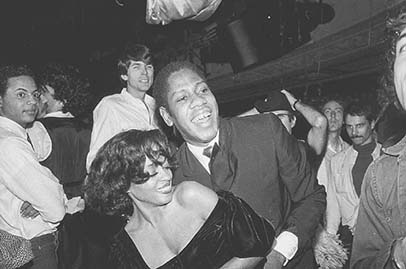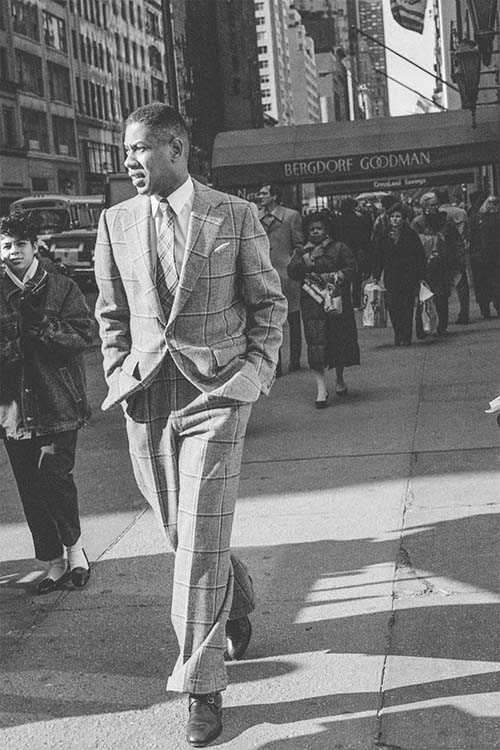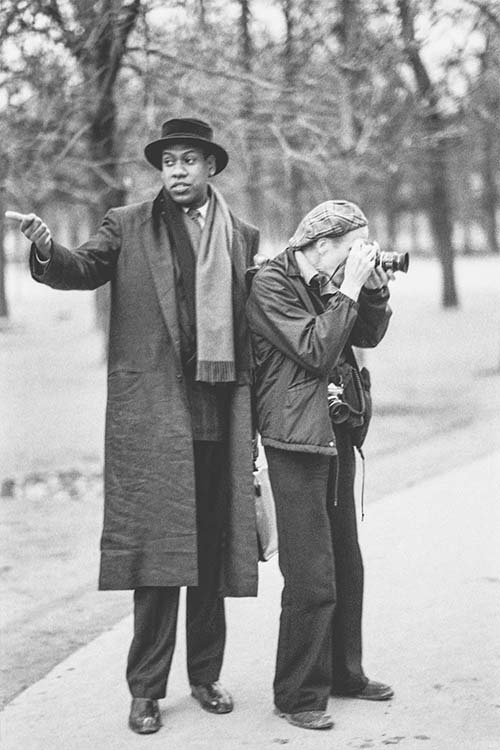
The Chiffon Trenches
Was this happening to all the boys my age? I had no idea. I thought this was supposed to happen, and it did happen over and over again, in the dark place, often in daylight. Coke Brown was the first. He must have shared his conquests with others in the neighborhood. A series of older brothers often lured me into their woodsheds as I played innocently with their younger siblings.
Confused and deeply afraid of being discovered, I went about my daily life as if these dark games didn’t exist. As they progressed to frequent interludes, I retreated into my own world of silence. I couldn’t dare tell my grandmother that I had been under the house, in the dark, with a grown man. She would have been devastated, and I would have been shamed. I feared that telling my father, a wonderful man who loved me, would be wrong, and that I would possibly be blamed and sent away to some sort of sanatorium as a result. Or I would be brought before the church deacons and censured, which equaled exile. I felt I had no choice. I kept it all to myself. I simply pushed through the pain and betrayal in silence, never having counsel or seeking psychiatric help. I felt my childhood traumas were little compared to those of the rest of the world.
What saved me from my shame and silence was the sanctuary of church and the sanctuary of my grandmother’s house. But this dark zone of trauma consumed me and stunted my emotional evolution, until I sprouted up like a bean stalk and left for college, far away from my abusers. Somehow, I grew up, and eventually I realized there were others who had experienced the life I had secretly lived.
I survived the destruction and taking of my innocence, though I know it is the cause of many of my personal issues as an adult. The hard drive in my brain was scrambled early on. It kept me from ever knowing how to respond to romance. All I ever wanted up until that point was the approval of Diana Vreeland, Andy Warhol, and John Fairchild.
I shied away from dipping my fingers into the decadent, hedonistic cauldron of New York City, but I enjoyed hearing about it. One person I could always depend on to make me blush was the famous Picasso expert John Richardson. The darling of all of Park Avenue, he was a dashing figure of aristocratic provenance and a close friend of Paloma Picasso and Maxime de la Falaise, as well as Françoise and Annette de la Renta (Oscar’s second wife) and Mica and Ahmet Ertegun. He moved in the best tone-on-high-tone circles. Yet he would tell me debauched stories about his Saturday afternoons at the West Village hard-core club the Anvil, a gay leather bar for men who preferred their sexual pleasure in harnesses, leather chaps, and slings hung from the ceiling. I sustained a long, long crush over the decades on Sir John Richardson. While I never told him about my feelings, his gaze remained intense. We remained good friends until his death in 2019.
Sometimes I’d go to the Anvil or another of these dens of S & M, as a fashionable last-minute visit after a night out on the town. One night, I went with Andy Warhol and Rudolf Nureyev. A black man in crotchless leather pants sidled up beside me and I accidentally made eye contact with him. He began making gestures, rubbing his arm, from his elbow to his wrist, and nodding.
“What is he doing with his hands?” I said.
“He is trying to seduce you,” Nureyev said. “He wants you to anally fist him in the back room.”
Wearing matte jersey by Scott Barrie, a necklace made from a metal pipe on a grosgrain ribbon, and my Rive Gauche velvet trousers, when I was told this, I shrieked and ran toward the door.
Studio 54 was more my scene, where everyone danced with everyone. People just navigated from one end of the dance floor to the other and danced with total strangers. I would head to Studio 54 four nights a week, making sure I got to work at WWD by nine-fifteen the next morning. I was at the apex of my good-looking young self. And although I had just barely escaped the segregated Jim Crow South, I had style and attitude. I could shine with the best of them in sartorial splendor and élan.
Often one danced alone; it was all good in the neighborhood. No one judged you. When I was not alone, my three favorite people to dance with were Manolo Blahnik, John Richardson, and Loulou de la Falaise, accessories designer and muse of Yves Saint Laurent (honorable mention goes to Diana Ross, with whom I danced one night in her Saint Laurent dress, dipping her head within inches of Studio 54’s parquet floor).

Studio 54, where anything could happen. Diana Ross is wearing a velvet and taffeta evening dress, from YSL’s opulent Russian collection of 1976. I loved to dance and I loved that moment, that great fandango dip of Diana Ross.
© Getty Images/Sonia Moskowitz
Loulou had come to New York along with the rest of the Saint Laurent group. Saint Laurent had created the masterpiece of his career, the Russian collection of fall/winter 1976. Loulou could borrow anything she wanted. I first met her at her mother Maxime de la Falaise’s annual New York Christmas party. Loulou wore a giant faille silk twill, with a full sweep of skirts hinged on inset velvet hip bands, rigged with silk tassels and passementerie, and with contrasting silk petticoats underneath. And the accessories: rows and rows of rock crystal and pearls, as well as exotic Turkoman silver cuffs and gold high-heeled sandals.
Loulou was like a pied piper. She was the catalyst for Yves and his life/business partner, Pierre Bergé, to go out and have a good time. When Loulou and the YSL clan—Yves, Pierre, Betty Catroux—would hit New York, all of fashionable Manhattan took notice.
Loulou was a rag doll in my hands when we danced at Studio 54. I’d toss her high up in the air and way down to the ground. Then Sir John Richardson, in a bespoke chalk-striped lounge suit, would dance up to me and fling me as far and as firmly as he could in his arms, in a vortex of French Apache-style dancing; just the two of us, in a make-believe world. Cool as a cucumber, no language shared, no furtive obscene gestures, just good old-fashioned fun. I loved every second of it!
During the holiday season, Paloma Picasso came to town and installed herself in a suite of rooms at the Waldorf. She got a limousine, and her entourage would sardine itself into the stretch on our way to a marathon of clubs. Eventually, Loulou and I would drop Paloma and her boyfriend off, and she’d let us hang on to the limo. She didn’t want to go to the after-hours bars we went to, not dressed in YSL! We’d go to Mineshaft, Eagle’s Nest, decadent places. I was out with Loulou, cruising in Paloma’s limo, and we stopped into a dark, happening place in the Meatpacking District. No one would talk to us. Women, especially those in couture YSL silk taffeta and high gold sandals and ropes of rock-crystal beads, were not welcome in this dark cave of louche and deviant sexual pleasures.
Suddenly, a man stood on top of the bar and started urinating on revelers below him. I screamed out to Loulou, “We have to leave, my peau de soie dinner slippers Reed Evins made for me are going to be splashed by a stranger’s urine!” The men hissed at us as we left but we didn’t care. We were having too much fun.
A few months later, I received an invitation to Loulou de la Falaise and Thadée Klossowski’s wedding, which would take place in Paris. WWD let me go; what could they do, I was invited to the ball! But I had to pay my own way, in coach.
Loulou and Thadée’s marriage was all the scandal. Everyone knew that Thadée, the handsome son of Balthus, was the longtime boyfriend of Clara Saint, public relations directress of Saint Laurent Rive Gauche. That was a powerful position. The chic Clara Saint was always something of a recluse, but now she was in social Siberia. Still, she kept doing her job. She had to; her money was gone.
Yves and Pierre Bergé threw the wedding party for Thadée and Loulou, which surely complicated matters. One hundred thirty invitations went out. I got one, but Clara Saint did not.
Karl Lagerfeld also received an invitation, and asked me to go with him. Not as a date, but as a buffer. Few people could navigate the social circles of both Karl Lagerfeld and his rival Yves Saint Laurent. Paloma Picasso was able to do it, and somehow, so was I.
The wedding party was held outside, on an island in Paris’s Bois de Boulogne. There was a definite awareness that Karl was there with me and not with his boyfriend, Jacques de Bascher. Yves was mad for Jacques and constantly begging Karl to give the handsome young man up. Perhaps Karl could be persuaded to exchange Jacques for a tapestry or something? Everyone knew Yves was madly in love with Jacques and hopelessly bitter. None of this was talked about, but it was known. In French they call it frisson.
Karl and I spent the night seated and snobbish. We didn’t interact with others; very grand. Yves spent the whole night high, redesigning the Zandra Rhodes ball gown Bianca Jagger was wearing. He pulled fresh ferns off the bushes and pinned them right on her ball gown. Bianca stood in quiet agony and let him do it. Yves had a huge, monstrous ego, as big as anyone’s. No one said no to him.
Everything at the ball was correct on the surface, but once the drugs came out, people were off having sex in the woods and getting into other kinds of debauchery. Karl and I wanted nothing to do with it; we left early.
The next morning I flew back to New York. It was midsummer and I was still settling into a new apartment, on East Fourteenth Street. None of my lights worked, which meant I must have forgotten to pay my electric bill before I went to Paris. It was too hot to go out, so I went to sleep in the heat.
Not until the next morning, on my way to work, did I realize this was a major blackout due to the heat, one that is still referred to as the blackout of 1977. Didn’t matter. All I cared about was my work. I walked down to the WWD office on Twelfth Street and got my next assignment.

Sauntering down Fifth Avenue in a Savile Row Huntsman bespoke suit, in December 1986, I believe.
Photograph by Arthur Elgort

In the Tuileries garden, April 1984, telling Bill Cunningham to take a picture of something that caught my eye. The coat is silk wool Perry Ellis. The hat is vintage.
Photograph by Arthur Elgort

With Bernadine Morris, of The New York Times, on the rue de Rivoli in Paris. My jacket lining is made from three full Hermès scarves! I wonder where that suit is now? In some attic?
Photograph © The Bill Cunningham Foundation. All rights not specifically granted herein are hereby reserved to the Licensor
Конец ознакомительного фрагмента.
Текст предоставлен ООО «ЛитРес».
Прочитайте эту книгу целиком, купив полную легальную версию на ЛитРес.
Безопасно оплатить книгу можно банковской картой Visa, MasterCard, Maestro, со счета мобильного телефона, с платежного терминала, в салоне МТС или Связной, через PayPal, WebMoney, Яндекс.Деньги, QIWI Кошелек, бонусными картами или другим удобным Вам способом.

